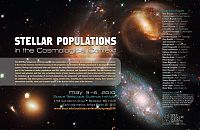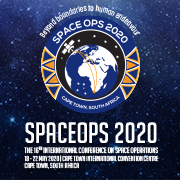›Stellar Populations in the Cosmological Context
Enormous progress has been made in the last two decades both in the detailed study of nearby resolved stellar populations and in the discovery and characterization of high redshift galaxies. The 2010 May Symposium aims at understanding the physical processes and observational characteristics of local stellar populations as a tool for elucidating the evolution of general stellar populations throughout cosmic history.
In the Galactic neighborhood, resolved imaging and spectroscopic studies of star clusters and galaxies provide a means to measure the kinematics, chemical abundances, and ages of individual stars. For such systems, high resolution N-body simulations can now track the dynamical motions of millions of stars over the lifetime of the oldest systems, and updated stellar models can shed light on their internal evolution. The interplay of these observations and theory form a critical input to our interpretation of the formation processes and subsequence stellar and dynamical evolution of nearby stellar populations.
The knowledge that we gain from studying nearby resolved stellar populations directly feeds our ability to measure the properties of distant galaxies. The morphology of these systems is tied to their past accretion and merger histories and subsequent tidal disruption and dynamical evolution, processes that we clearly see occurring today in nearby galaxies such as the Milky Way and M31. The observed light in the different structural components of these galaxies is dominated by the distribution of individual stars in post main-sequence evolutionary phases, and is therefore linked to our understanding of stellar evolution beyond the main-sequence turnoff. The interplay of these dynamical and stellar evolution effects with global influences from the initial mass function, star formation laws, and nucleosynthesis and feedback relations, shapes our current view of galaxies.
In the 2010 May Symposium, we will bridge these two very different astrophysical regimes in an effort to enhance our interpretation of the properties of stellar populations over cosmic time. The structure of the symposium will involve first presenting observational and theoretical views on triggering processes that lead to the formation of stellar populations, followed by a discussion of their subsequent stellar, chemical, and dynamical evolution. This includes investigating the impact of feedback processes on future generations of stars, both from massive stars in systems such as 30 Doradus and from lower mass stars as inferred from the observation of multiple sequences in nearby star clusters. The link between star clusters and galaxies, and their role as building blocks of more massive systems will also be discussed. Our knowledge from these nearby resolved studies will guide what we can confidently say about galaxy properties across cosmic time, including new observations ranging from systems at intermediate redshifts when the cosmic star formation rate is peaking to even earlier epochs.
Track this event on your Apple calendar














 United States
United States